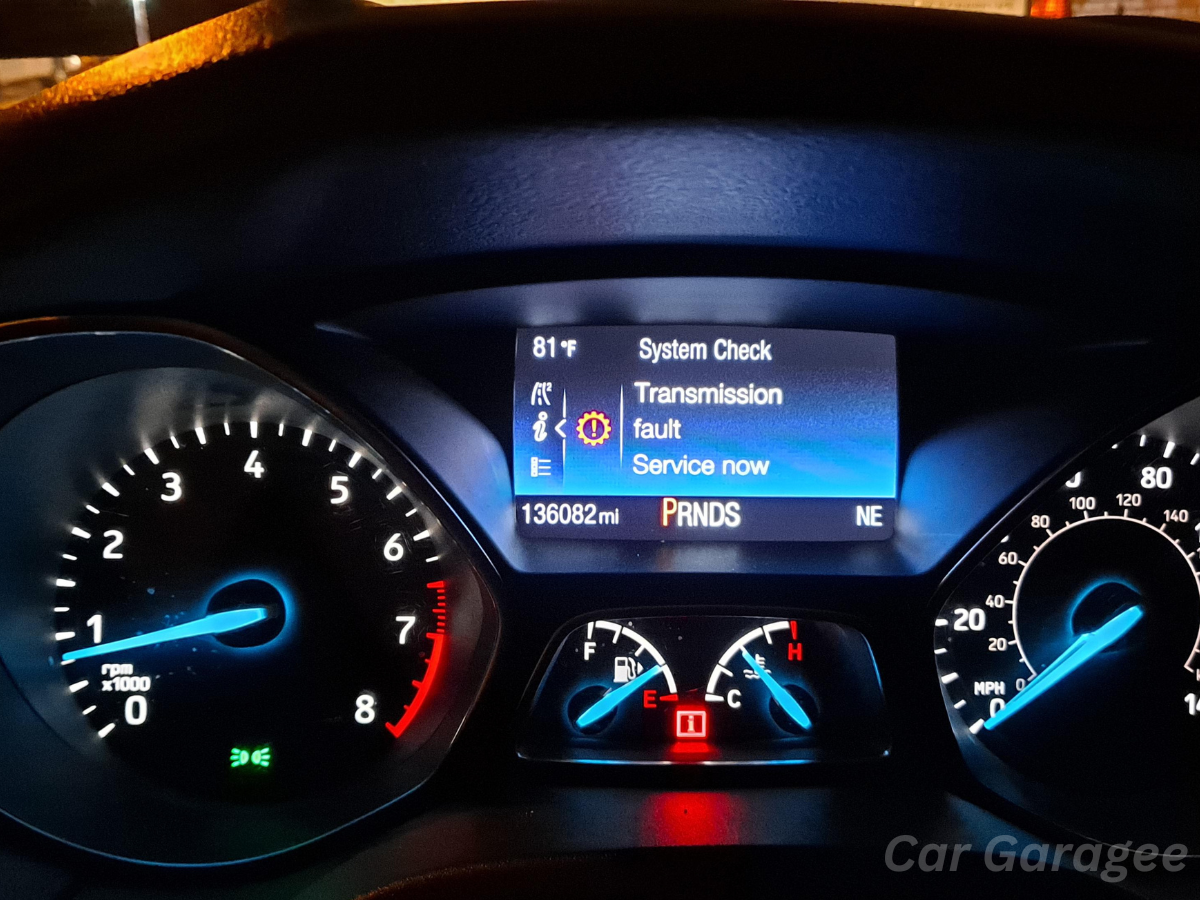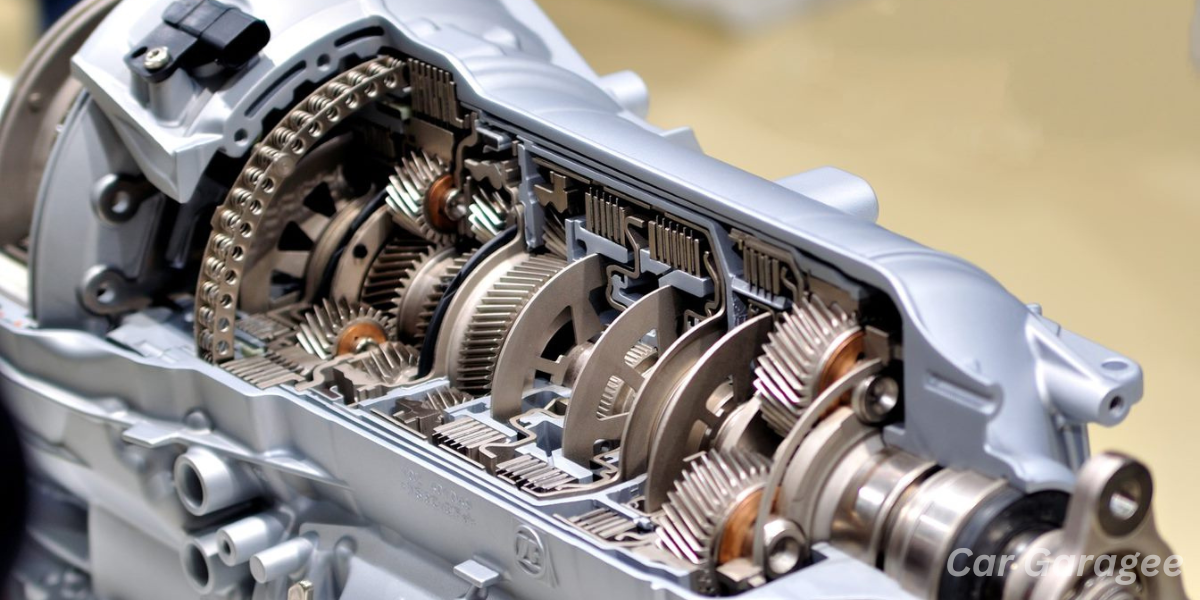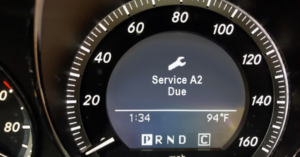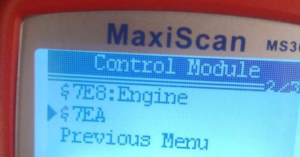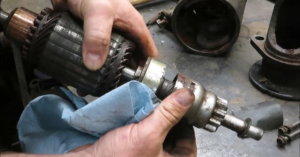Experiencing a Transmission Fault Service Now warning in your Ford Focus or Escape can feel overwhelming. This warning is displayed due to various causes within the transmission system, such as worn or damaged components, low transmission fluid, or contaminated fluid. For any vehicle owner, a malfunction in this essential part of the drivetrain can bring severe issues to vehicle operations, affecting comfort and reliability.These problems may stem from electrical issues or software issues, which in turn influence engine power and the ability to transfer it effectively to the wheels.
Facing this situation, car owners may encounter poor vehicle performance and potential risks if critical warnings are ignored. With transmission being crucial for vehicle performance, understanding the nature of these faults is key, as the dashboard might show a Fault notice indicating a range of critical reasons. This article comprehensively examines the potential risks and troubleshooting methods to fix these issues and avoid further problems, helping owners take steps toward preventive measures.
What Does a Transmission Fault Mean?
When you’re driving an advanced automatic car, seeing a transmission fault message can be quite worrying. Modern transmissions rely on complex systems, including OBD2 engines, with the gearbox being managed by a control module. If this module detects a defect in the system, it triggers a warning message similar to the check engine light. This warning light signals a problem that could be anything from transmission-related components overheating, to broader issues with the car’s design.
To address this, you need to read the trouble codes using a gearbox diagnostic kit that’s module-specific and compatible with your vehicle. Whether your car has a traditional, continuously variable, or dual-clutch system, this tool will help you understand the issue properly. The car might sometimes enter fail-safe or limp mode to protect the transmission from further damage.
Main Causes of the Transmission Fault Service Now Issue:
1. Dead Battery and Voltage Variations
One common reason for a transmission fault warning is a dead battery or voltage variations. If the battery is drained or there is insufficient voltage, the warning light can activate. This may seem like a specific problem with the transmission, but it’s often related to power supply issues in the Ford gearbox. Simply resetting the Transmission Control Module may fix the error message.
2. Dual-Clutch Gearbox Concerns
Many drivers with dual-clutch transmissions have reported issues leading to the transmission fault service now warning. These gearboxes are known to be a source of concern due to numerous reports of malfunctioning systems. Sometimes, the issue only becomes apparent when the driver arrives at the dealership, as the transmission may stop working entirely.
3. Sensor Failures and Notification Disappearance
Another frequent issue is sensor failure. The TCM monitors the transmission through various sensors, and when one of them fails, the notification may appear and then disappear. This inconsistency can make it hard to pinpoint the issue, but a scan’s fault codes can help identify which sensor or component is malfunctioning.
4. Slow Acceleration and Gear Sliding
A malfunctioning transmission can cause slow acceleration or gear sliding, where the gearbox doesn’t shift or move as expected. This could be due to internal weakness in the modules or parts of the gearbox. Over time, this unpredictable behavior may show signs such as poor fuel economy and costly repairs if not addressed early.
5. Transmission Fluid Leaks
Low or leaking transmission fluid is another major cause of transmission-related issues. Newer vehicles that rely on the computer system to check fluid levels may still experience problems due to undetected leaks in the valve body or cooler lines. A red fluid under the vehicle indicates that you should check your transmission.
6. Speed Sensor and Gear Shift Problems 
A faulty speed sensor can lead to inconsistent gearshifts and delayed shifts. The P0500 code may appear during a scan, indicating a problem with the speed sensor or shifter cable. These issues can worsen without proper maintenance, leading to nonfunctional gear selection.
7. Overheating and Internal Damage
Transmission overheating is often due to contamination, water intrusion, or overheating from improper driving habits, such as towing heavy loads. This can damage the internal parts, causing slipping, high revving, or even total failure. Addressing these issues early prevents further damage.
8. Valve Body and Torque Converter Failures
Lastly, issues in the valve body or torque converter can result in transmission failure. The valve body directs the fluid flow through the transmission, while the torque converter connects the engine and transmission. Problems like shuddering or slippage from a bad converter may cause the transmission to become contaminated with debris, leading to the warning light turning on.
Important Note
If your Ford is still under warranty and the gearbox fails, take it to the dealership. Most Ford models come with a 5-year or 60,000-mile engine warranty, and since transmissions typically fail around 50,000 miles, you should be able to get a replacement for free under the warranty.
How Do You Reset the Transmission Malfunction on a Ford Focus?
To reset the transmission malfunction on your Ford Focus, follow this simple process. First, consult your owner’s manual for any specific guidance related to your model. Gather basic tools like wrenches and ratchets to begin the step-by-step reset procedure. Turn the ignition to the OFF position and disconnect both battery cables from their terminals for 1-2 minutes.
After that, reconnect the cables and make sure the connections are tight. Once this is done, start the vehicle and let it idle for about 10 minutes without touching the accelerator. During this period, the systems will reboot, and you should watch the dashboard lights closely for any signs of malfunction, particularly the wrench symbol, which should disappear if the reset was successful.
If the issue persists, you may need to take further steps. Safely jack up the front of the Focus and secure it with jack stands. Locate the transmission control module, usually bolted to the housing near the bottom of the engine compartment, and connect an OBDII scanner to the port under the dash. Use the scanner to access the function menu and enable the submenu to select the reset option.
Follow the on-screen instructions displayed, and after completing the reset, clear any lingering error codes. Finally, lower the car and take it for a test drive, but avoid aggressive driving at first, allowing the transmission to relearn its adaptive memory for smooth operation.
Read More:
How To Put Your 2020 Alfa Romeo In All-Wheel Drive?
How To Remove Clear Coat From Car: The Step-by-Step Guide
How To Deal With Transmission Fault Service Now Warnings
Car Restarted
When you turn off the car and restart it, there is a possibility that a sensor or battery is causing the problem. If the notice does not recur, it could be a minor issue. However, if the problem persists, it’s best to take the vehicle to a local dealer or repair shop for a thorough inspection. If the gearbox is the culprit and the issue reappears after restarting, the car may need to be towed to a local mechanic for further diagnosis. Whatever the reason, never disregard the notice that appears on your dash.
TCM Reset
If the Transmission Fault Service Now warning appears, it may indicate a malfunctioning transmission control module (TCM). TCMs help control transmissions, and when there’s a problem, you may be unable to drive the car. In some cases, you can fix the issue by replacing the TCM. However, if the problem persists, the TCM may need further attention to resolve the issue and get the transmission working properly.
Can a Ford Focus Transmission Be Repaired?
When the Ford Focus gearbox is damaged, it’s important to know whether the transmission is repairable. In many cases, a certified technician can diagnose the issue and help you determine if the problems require replacing the entire gearbox or a repair. If your car is out of warranty, you may need to pay between $2,000 and $4,000 to replace the gearbox, especially for the Ford Power Shift model, which has a known design issue. This problem might only be quickly resolved with a complete replacement, so getting the right assessment from a technician is essential to avoid unexpected costs.
Can You Drive With a Ford Transmission Fault?
Driving with a transmission fault in your Ford can be a risky decision for any vehicle owner. The drivetrain works to transfer power from the engine to the wheels, but when there’s a fault in this crucial system, it can lead to severe problems. If owners continue to drive without properly assessing the faults, they risk further damage to transmission-related components. This can escalate safety concerns due to the potential loss of control, which could result in accidents.
Understanding these risks is essential to take the right steps and avoid unnecessary problems. Immediate action may be needed to prevent a minor issue from becoming more costly, especially when ignoring it could mean expensive repairs. Assessing the situation early helps you decide whether it’s safe to continue driving or not. By staying aware of the condition and acting promptly, you can avoid further wear and keep your vehicle in good shape.
Preventing Transmission Faults
Preventing transmission problems in your Ford is essential to avoid costly repairs. Following these tips can help:
- Regular Maintenance: Always follow the scheduled maintenance plan for your Ford vehicle to keep the transmission in good condition.
- Use the Right Fluid: Use the specific transmission fluid recommended by Ford to ensure proper function.
- Drive Responsibly: Avoid sudden starts and stops, and in manual transmissions, ensure you fully engage the clutch before shifting gears to prevent unnecessary strain on the transmission.
Ford Escape transmission fault service is now fixed & all coolant bypass valve locations
FAQS
What does transmission service fault mean?
A transmission fault means the transmission system is malfunctioning, affecting your car’s performance. It could result from worn or damaged components within the system or from low or contaminated transmission fluid. These problems often arise due to electrical or software issues that disrupt the smooth operation of your vehicle. Keeping an eye on your transmission and addressing any signs of trouble early on can prevent further damage and save you from costly repairs.
Can you drive with transmission fault service now?
Driving your car is unsafe when there is a confirmed internal gearbox leak or transmission malfunction. While you may have an appointment that’s 1.5 hours away, the risks associated with driving in such a condition can outweigh the benefits. Continuing to drive could worsen the problem, and any further delaying of the necessary repair would only add to the inconvenience.
What is a transmission fault in a car?
A transmission fault in a car can lead to complete loss of performance, often indicated by slipping gears, symptomatic noises, or a lack of transmission fluid caused by leaks. Other signs include overheating or outside factors affecting the system’s functioning ability. Ignoring these symptoms may result in transmission failure, making driving impossible or unsafe.
How long does it take to fix a transmission fault?
Some repairs can be quick, such as flushing the transmission fluid, sealing, or performing a recalibration, which can often be done in a day. However, more complex fixes, like replacing the shift solenoids, may take an extra day or two. If a full rebuild is required, it becomes much more labor-intensive and can take anywhere from three to four days, depending on the extent of the work.
Is transmission failure expensive?
Fixing transmission problems can be expensive, especially if you need to replace the entire unit. A full replacement can cost around $2600, typically between $1800 and $3400. Smaller repairs, such as fixing minor issues, are less expensive, usually averaging around $900, but can vary from $300 to $1500 depending on the issue.
Can a bad transmission damage the engine?
A bad transmission may not directly harm the engine, but improper removal or installation of the surrounding components can lead to serious issues. If these parts are handled with poor care during the process, they could negatively affect the engine’s performance, causing long-term damage.
Note: The information provided in this post is for informational purposes only and does not constitute professional automotive advice. Please consult a certified automotive technician for a precise assessment and recommendations regarding your vehicle.

Mian Hashir is a passionate automotive enthusiast and the lead author at Car Garagee, a website dedicated to providing in-depth car reviews, maintenance tips, and the latest news in the automotive world. With years of experience in the industry, Hashir combines his technical knowledge with a love for cars to deliver insightful and engaging content. Whether you’re a car owner or a curious reader, Mian Hashir’s articles help readers make informed decisions, from choosing the right vehicle to understanding how to keep it in top condition.

